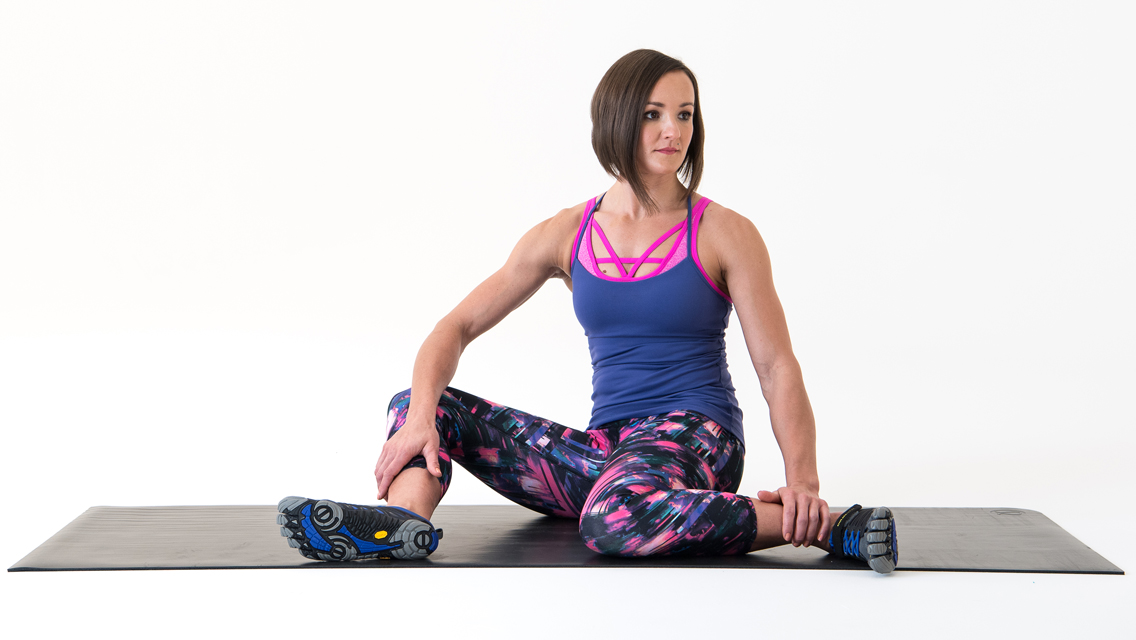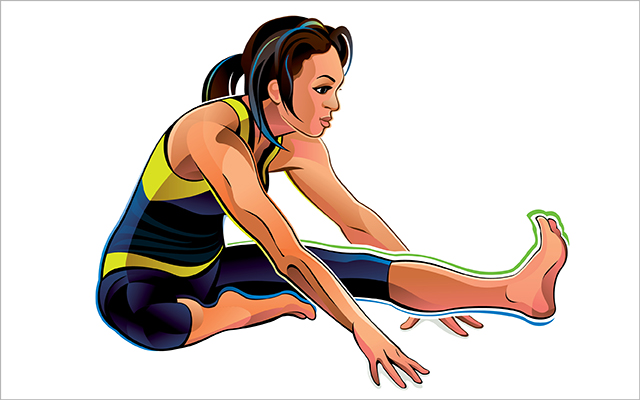Explore the moves:
90/90 Internal Rotation Focus ⋅ 90/90 External Rotation Focus ⋅ Quadruped Hip CARs
You’ve heard it before: All the sitting we do is hurting our bodies. When it comes to mobility, our hips, especially, are paying the price. Long periods of sitting can tighten the hip flexors, creating weakness and instability in one of the body’s key joints.
Though we tend to think of strength and flexibility separately, they actually work together to aid your mobility. “If your hips feel tight or stiff, it’s quite possible that they’re really just weak,” explains Ryan Orrico, a Functional Range Conditioning (FRC) instructor in Los Angeles.
FRC is a combination of passive stretching, high-tension contractions, and circular rotations that work together to boost your resilience and flexibility. (For the specific details, see “FRC Acronyms Explained,” below.) The protocol can also help improve your overall movement quality.
The following exercises will help you gain better control over your hips — which you rely on for walking, cycling, squatting, crossing your legs, and all sorts of other movements — and expand your range of motion. Because these moves are designed to improve both strength and flexibility, they’ll also help prevent injury while reducing tightness and imbalances.
90/90 Internal Rotation Focus
- While seated on the floor, position your legs in a pinwheel position: right leg in front of you and left leg to the side. Aim to keep both knees and ankles at 90 degrees. Rotate your torso toward your left leg and grab your ankle with your left hand.
- If you’re already very mobile, hold for about 20 seconds. If you’re less mobile, hold for up to two minutes. You may not feel a deep stretch — just look for a sensation.
- Take a breath and engage your core and leg muscles, and then use the force from your hips to push your left (rear) knee, shin, and ankle into the ground. (This is a PAILs contraction.) Hold the contraction for about 15 seconds, and then relax.
- Reengage your core and leg muscles and bend your torso a little farther toward your left ankle while trying to pull your ankle and shin off the floor. (This is a RAILs contraction.) Hold for about 15 seconds, then release.
- Repeat on the opposite side.
90/90 External Rotation Focus
- Assume the same seated position as the previous exercise. This time, however, rotate your torso toward your right leg.
- Hold your trunk upright and find a subtle stretch in the outside of your left hip. If you’re already very mobile, start with a 20-second hold. If you’re less mobile, hold for up to two minutes.
- Take a breath and engage your core and leg muscles, leaning slightly forward. Then use the force from your hips to push your right (front) knee, shin, and ankle toward the ground. Focus the push through your ankle, which will generate more rotational force in the hip. (This is a PAILs contraction.) Hold for 15 seconds, then relax.
- Reengage your core and leg muscles and pull your ankle, shin, and knee off the ground. (This is a RAILs contraction.) You won’t move much (or at all), but contracting these muscles will give you a deeper stretch. Hold for 15 seconds.
- Repeat two more times, holding a passive stretch between rounds for 20 seconds to two minutes, depending on whether you need to expand range or just strengthen what you have.
- Repeat on the opposite side.
Quadruped Hip CARs
- Assume a tabletop position with your wrists directly below your shoulders and your knees directly below your hips (1).
- Take a deep breath and pull your ribs down and in to engage your core. Keep your elbows locked and your glutes and hamstrings engaged.
- Without losing core engagement, draw your left knee as far as you can toward your chest (2). Then push your knee to the side as far as you can (3).
- Internally rotate your hip so your heel reaches toward the ceiling (4), before drawing your knee back down toward your chest. Take your time: The full rotation will take about 20 seconds.
- Perform the same movement in reverse, and then repeat on the opposite leg.
FRC Acronyms Explained
CARs: Controlled articular rotations (CARs) are high-tension circular movements you can use as a warm-up, cool-down, or daily standalone routine to build and maintain mobility in all your major joints.
PAILs: Progressive angular isometric loading (PAIL) movements begin with a deep passive stretch, then gradually contract the extended muscle as hard as possible in the stretch position.
RAILs: Regressive angular isometric loading (RAIL) movements are similar to PAILs, except you contract the muscle opposite the one being stretched. PAILs and RAILs are generally used together.




This Post Has One Comment
Can I do this lying down with a strap on the extended leg?